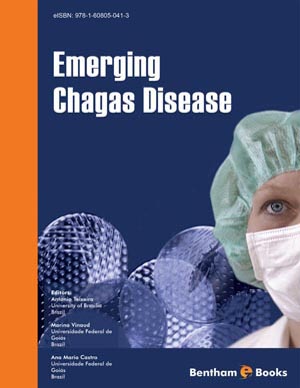Abstract
The lifecycles of the organisms involved in the circulation and transmission of the Trypanosoma cruzi agent of Chagas disease are intimately related. It appears that these cycles begun after an adaptive process in the quaternary, Mezozoic, Cretaceus, over 90 million years ago. Gradually, the triatomines became intermediate hosts and vectors of the protozoan infection to mammals when the enzootic infections contaminated omnivorous mammals, particularly skunks, armadillos and ant-eaters. Hematophagy resulting from a biochemical requirement for the insect growth has contributed to approximate triatomines and mammalians. Triatomines adapted to human dwells generated the endemic Chagas disease. This chapter describes and characterizes the habits of triatomines, which are important to understanding T. cruzi transmission by the insect-vector, its control and disease prevention. The success obtained with the spray of pyrethroids insecticides to control the triatomines intradomicile recommends a lot more actions to prevent repopulation of the human dwells with the repulsive insect-transmitters of the T. cruzi infections.






















